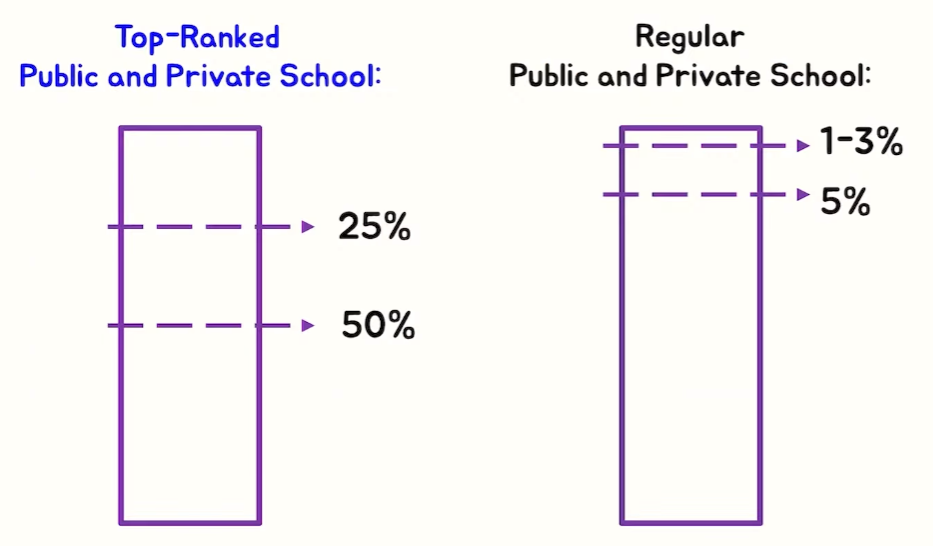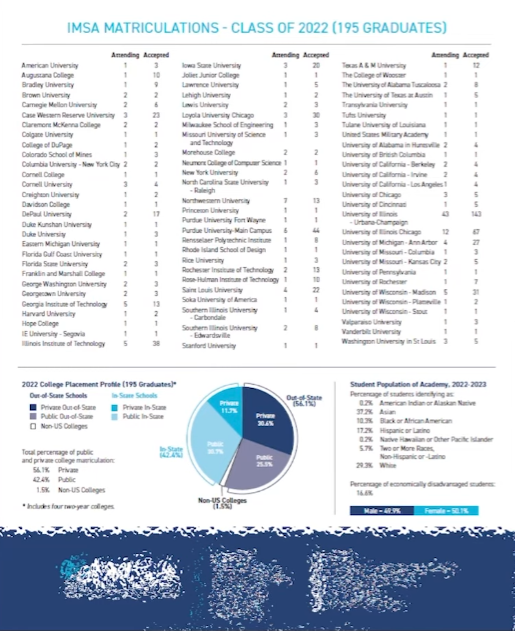
A ONE INSTITUTE
Nov 30, 2024
Today, I’ll share tips on how to choose the right high school.
One of the most common questions I get during private consultations is: Which high school should I choose? Parents and students often wrestle with the decision between attending a competitive high school to aim for top universities or choosing a less demanding school where the student can stay at the top of their class and still secure admission to a good college.
Choosing the right high school can be just as important as selecting the right college! Here are some tips to help you make an informed decision.
When deciding on a high school, you’ll encounter options like those shown in the image (Public School/Private School/Other). However, they generally fall into four main categories:
Public School
Magnet School
Private School
Boarding School
Most families weigh these four choices carefully. The right choice will vary depending on the student’s circumstances. Consider the following points to help decide which school might be the best fit for your child.

Number of High Schools in the U.S. (Data from NCES)
Public Schools: Approximately 23,519
Private Schools: Including unofficial data, about 10,000. However, only 3,626 are worth considering.

Schools Ranked by College Admissions Outcomes
Left Box: Top-Ranked Public and Private Schools (those sending 25+ students to the top 25 colleges).
Right Box: All other Public and Private Schools.
If a public or private school sends at least 25 students to the top 25 universities, it can be considered a highly competitive school (left box). Schools that don’t meet this criterion belong in the right box.
Students who attend highly competitive schools (left box) but don’t perform in the top percentile often express dissatisfaction with their college admissions results. Based on my observations, this concern is valid.
If you’re not confident about ranking in the top 50% at a competitive school, I strongly recommend against attending. The academic pressure won’t yield satisfactory results. Instead, it’s often better to attend a less competitive school (right box) and aim for the top of your class.
Students in the 25-50% Range at Competitive Schools
Students ranked in the 25-50% range at competitive schools may have been able to rank in the top 3-5% at a less competitive school. This group tends to have more mixed college outcomes, so thoughtful consideration of the student’s strengths and preferences is crucial.
Students in the Top 25% at Competitive Schools
Students ranked in the top 25% at competitive schools typically achieve strong college outcomes. They’re comparable to students ranked in the top 1-3% at less competitive schools.
Key Takeaway
If you’re confident about being in the top 25% at a competitive high school, it may be the better choice. However, if there’s uncertainty, it’s worth considering less competitive options where your child can excel academically and build a stronger profile.

High School Rankings
Public school rankings are available on many websites. Competitive public and private schools (left box) generally fall within the top 600 schools nationwide, which accounts for approximately 5.1% of all public schools.
To achieve strong college outcomes from these schools, students should aim to rank in the top 25%. This translates to being in the top 1% of students across all public and magnet schools nationwide.

For private schools, the competitive ones narrow down to about 150 out of 2,417 schools after excluding lower-tier options. Again, achieving top 25% at these schools requires being in the top 1% of students overall.
Insights from Research

Studies like those from Stanford’s CEPA highlight that academic rankings often remain stable from middle school to high school. This means that students who were in the middle or lower ranks in middle school rarely move into the top ranks in high school.
If your child was in the top 1% in middle school, they have a good chance of ranking in the top 25% at a competitive high school. Otherwise, they might be better suited for a less competitive school where they can thrive academically.
Personality and Learning Environment
It’s also important to consider the student’s personality.
Students who thrive in a competitive environment, where peers are highly motivated, may do well in a competitive school (left box).
Conversely, students who are easily influenced by their surroundings might benefit from a less competitive school if it enables them to maintain focus and excel.
Even if a student doesn’t achieve top 25% in a competitive school, the challenging environment can still enhance their abilities.
Legacy and School Profiles

When choosing a high school, don’t overlook its legacy. Search for the school’s name and its college admission results. Look at the number of students admitted to prestigious universities over the years.
For example, if you live on the West Coast and aim for UC schools, avoid high schools with low UC admission rates.

Similarly, if Ivy League schools are the target, check how many students from the high school have been admitted.
AP vs. IB
If choosing between AP and IB programs:
Students who excel in test-taking may prefer AP.
Students who enjoy writing, philosophy, discussion, and critical thinking may find IB more suitable.
Demographic Considerations
Pay attention to demographic data. High Asian populations often mean increased competition for high GPAs, which can be challenging to achieve.
Final Tips
Although factors like school size, student-teacher ratios, and resources are important, focusing on the key considerations discussed here will provide substantial guidance.
I hope these tips help you make an informed decision about choosing a high school. Wishing you the best! Thank you!
